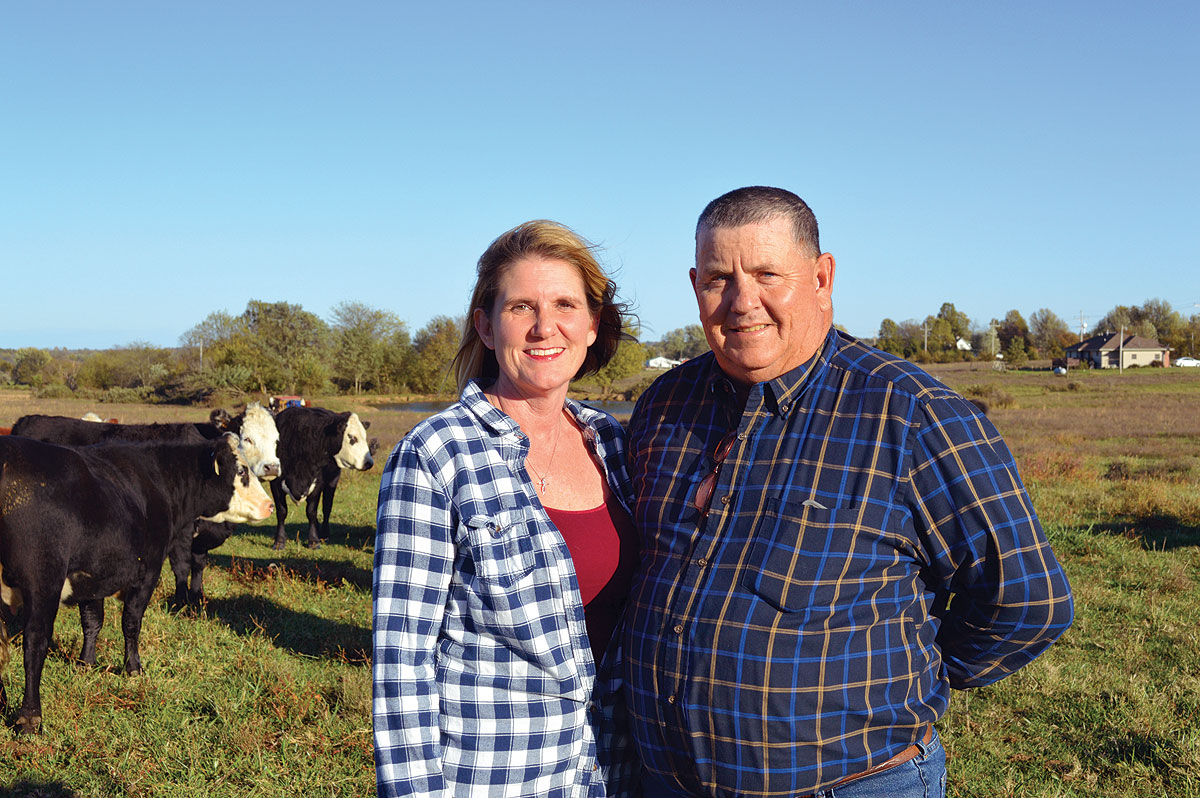
“Ten years ago, it started as a joke,” Katie Stewart, vice president of the Southwest Missouri Goat Producers Association, explained how her family’s involvement with Boer goats began. “Bob (Katie’s husband) brought home three baby goats from the sale barn for our children. He called them ‘weed eaters’ and from there…” she waved a hand towards the lot full of 40 South African goats known for their meat production.
The Stewart family lives in Dallas County, on the northern edge of Buffalo. Bob works full time for the Bradley Land and Cattle Company of Long Lane, Mo., and Katie is employed at the Genex Cooperative in Strafford, Mo., the world’s largest A.I. (artificial insemination) cooperative, working in custom semen collection. Today, the Stewarts’ own kids are now teens, helping in all phases of the goat business.
Seth, age 16, and Lauren, age 13, like their parents, are totally invested in agriculture. They feed and take care of the family’s herd of goats, as well as a couple of heifers on the side. Seth is in FFA and Lauren is active in 4-H. Seth is a director for the Missouri Junior Boer Goat Association (MJBGA) and also a director for the national organization, the Junior American Boer Goat Association (JABGA). Lauren is a member of MJBGA and both children attend Buffalo schools. They spend much of their spring and fall weekends at various fairs and shows with their goats.
“It seems like we are going somewhere every weekend,” Katie commented. “This year we went to nationals for the first time. It was at Louisville, Ky., this year and Lauren had the champion percentage doe in 4-H at the state fair this summer.”
The Stewart family works to get their goats ready each year for shows and they say that raising goats has its pros and cons. “You get to meet a lot of interesting people,” said Seth. Katie added, “And, we’re all about low input for highly productive animals, that’s what is most important. We sell some of our goats at the Buffalo Livestock Market, some at production sales and some by private treaty.”
The family has worked to grow their herd by upgrading yearly and learning more about disease preventative measures. “We’ve about reached capacity for the 16 acres we have here,” said Katie. “Without a doubt, the hardest part is the disease and parasites. Last year, we lost a third of our kid crop to some sort of spontaneous abortion problem.”
The family believes that being members of respected agricultural organizations such as the Farm Bureau, Missouri Cattlemen’s Association and their local meat goat association is essential in having a voice for agriculture. “It is so important for all of us to have a united front to have a real voice in Jefferson City and Washington D.C.,” Katie said. “We can’t be poultry producers or goat producers or cattlemen anymore – we have to stand together and be a uniting force for agriculture. In the same way, we have to always support youth in agriculture. People have to remember where their food comes from and how it got to the grocery store in the first place. Most importantly, youth in agriculture is all about where it’s going to come from in the future. ”







